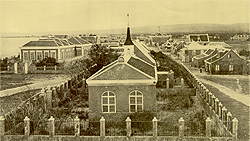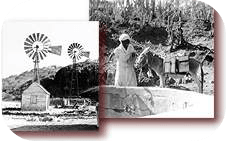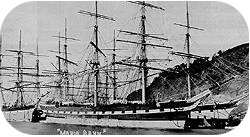Bonaire’s history is deeply rooted in its inhabitants and their culture.
Bonaire’s history is reflected in the faces of her people. From the first inhabitants, the Caiquetios (a branch of the Arawak Indians) who sailed from the coast of Venezuela almost 1000 years ago, to the many cultures now living and working in Bonaire today, the island has a distinct character that is all its own.
A brief history of Bonaire.
The first Europeans came to Bonaire in 1499, when Alonso de Ojeda and Amerigo Vespucci arrived and claimed it for Spain. Finding little commercial value and seeing no future for large-scale agriculture, the Spanish decided not to develop the island. Instead, they unceremoniously enslaved the Indians and moved them to work in the plantations on the Island of Hispaniola, effectively leaving the island unpopulated.

The name Bonaire is thought to have originally come from the Caiquetio word ‘Bonay,’ meaning low country. The early Spanish and Dutch modified their spelling to Bojnaj and also Bonaire. The French influence, while present at various times, was not strong enough to make the assumption that the name means “good air.” Regardless of how the name came about, the island remained a lonely outpost until 1526.
In 1526, cattle were brought to the island by then-governor Juan de Ampues. Some of the Caiquetios were returned to act as laborers. A few years later, the island became a center for raising other animals such as sheep, goats, pigs, horses, and donkeys. Since they were being raised more for their skins and not their meat, they required little tending and were allowed to roam and fend for themselves. The result was large herds of animals that far outnumbered the population. Today, many wild donkeys still inhabit the Kunuku (outback). However, the majority now enjoy life at the Donkey Sanctuary. Many goats can also be seen foraging in less populated areas of the island.
Bonaire’s early years were not ones of prosperity.
Her inhabitants were mostly convicts from other Spanish Colonies in South America. The only permanent settlement was the village of Rincon, located far inland where it was thought to be safe from pirates. In those years, development was discouraged in favor of the richer, more productive colonies.

In 1633, the Dutch took possession of Curacao, Bonaire, and Aruba. The largest island, Curacao, emerged as a center of the notorious slave trade. Bonaire became a plantation island belonging to the Dutch West Indies Company. It was during those early years that the first African slaves were forced to work, cutting dyewood, cultivating maize, and harvesting solar salt. Grim reminders of those days still remain in the form of slave huts and salt pans which were laboriously constructed by hand. They are an important part of the island’s heritage and have been left to stand mute testimony to Bonaire’s repressive beginning.
Until 1816, ownership of Bonaire changed hands several times, finally being returned that year to the Dutch due to the Treaty of Paris. A small fort, Fort Oranje, was built to protect the island’s main resource, salt. Salt was one commodity that Bonaire had an endless supply of, although it took back-breaking slave labor to produce it. In the early days of the industry, the most important use for salt was in food preservation since refrigeration was still centuries away.
By 1837, Bonaire was a thriving center of salt production.
The government, who by then controlled the industry, built four obelisks, each painted a different color, red, white, blue, and orange (the colors of the Dutch Flag and the Royal House of Orange). They were erected strategically near areas of the salt lake. The idea was to signal ships where to pick up their cargoes of salt. A flag of the corresponding color was raised atop a flagpole, signaling the ship’s captain where to drop anchor.


The abolition of slavery in 1863 signaled an end to the era of exploitation of those first Bonaireans. It was almost a hundred years later that the salt industry was revitalized. Today it is a division of Cargill, Inc., one of the largest businesses in the world. It also was during this time that the island began to attract visitors. Tourism was born when the island government constructed the first ship’s pier in the harbor. It allowed cruise ships to tie up alongside the wharf and discharge passengers. It also made it easier to bring in goods and supplies for the island’s residents. Hotels began to spring up and cater to the early visitors who enjoyed the tranquility of Bonaire. In 1943, an airport was constructed to make it easier for tourists to reach the island. Bonaire’s history continues to be written. The people of Bonaire are part of the past and are proud of what they have accomplished on an island that was abandoned hundreds of years ago and deemed useless by the Spanish. As for the future, Bonaireans welcome progress but have consciously decided to step back and look at how it will impact their island and their lives. They have learned to balance their growth with the environment.
The Bonaire Flag
 Our flag contains the colors red, white, and blue, representing our respect for the Dutch Kingdom’s tricolor. At the upper end of our flag, we have a yellow triangle, which is the bright light of our sun and also the beauty of our nature. Most Bonairean flowers are yellow, like Kibrahacha, Kelki gel, Brasilia, Hobada, Cucu, Sente-bibu, Angelo Watapana, and many others. Below we have a blue triangle, and that is the color of our beautiful sea. You can see the triangle as a gigantic wave or a high mountain to remind us of the great heights we have climbed. In the middle of our flag is the white area symbolizing peace, liberty, and tranquility. In this white area, we have a black ring with four points of the navigation compass. That compass is what our indisputable navigators have used to travel all over the world. In that ring, there is a six-pointed red star. The color symbolizes blood, as the fighting and surviving spirit of the six traditional regions, which form together with the people of Bonaire.
Our flag contains the colors red, white, and blue, representing our respect for the Dutch Kingdom’s tricolor. At the upper end of our flag, we have a yellow triangle, which is the bright light of our sun and also the beauty of our nature. Most Bonairean flowers are yellow, like Kibrahacha, Kelki gel, Brasilia, Hobada, Cucu, Sente-bibu, Angelo Watapana, and many others. Below we have a blue triangle, and that is the color of our beautiful sea. You can see the triangle as a gigantic wave or a high mountain to remind us of the great heights we have climbed. In the middle of our flag is the white area symbolizing peace, liberty, and tranquility. In this white area, we have a black ring with four points of the navigation compass. That compass is what our indisputable navigators have used to travel all over the world. In that ring, there is a six-pointed red star. The color symbolizes blood, as the fighting and surviving spirit of the six traditional regions, which form together with the people of Bonaire.











